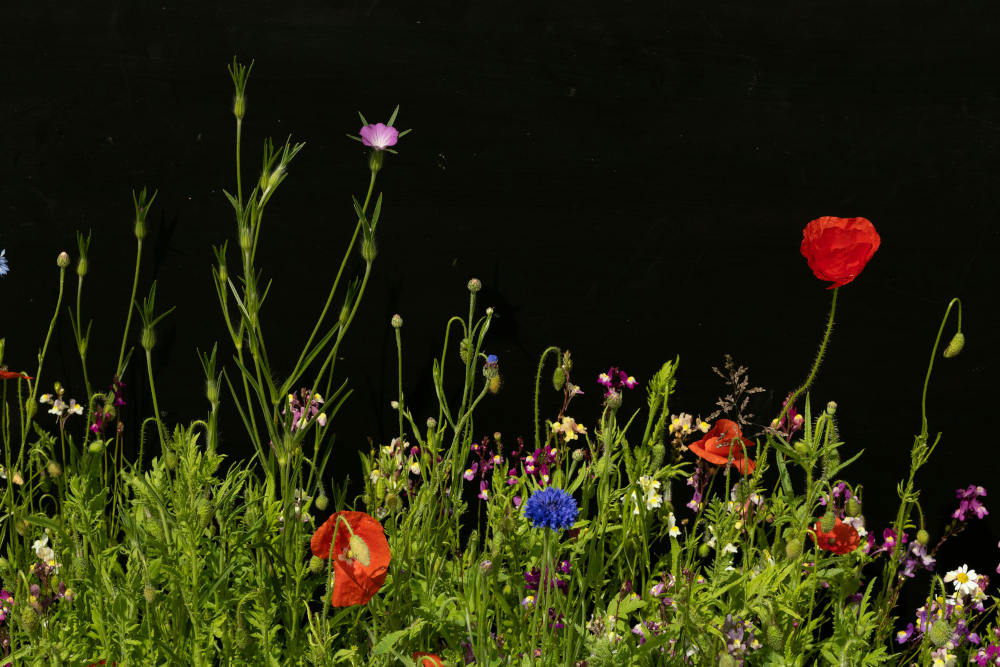
La cueillette sauvage est une pratique ancestrale qui consiste à cueillir des herbes et des plantes dans leur environnement naturel à des fins thérapeutiques, spirituelles ou culinaires. Contrairement à l'agriculture ou à la cueillette commerciale, la cueillette sauvage privilégie le respect, la durabilité et la réciprocité avec la Terre.
Que vous soyez novice en cueillette sauvage ou que vous approfondissiez vos connaissances en herboristerie, ce guide présente 20 plantes essentielles à cueillir de manière responsable. Chaque plante est présentée pour son accessibilité, ses usages traditionnels et son importance écologique.
Avant de récolter, rappelez-vous : ne prenez que ce dont vous avez besoin. Renseignez-vous sur la législation locale. Familiarisez-vous avec vos plantes. Laissez suffisamment de terre pour la nature et les générations futures.
Panaprium est indépendant et pris en charge par les lecteurs. Si vous achetez quelque chose via notre lien, nous pouvons gagner une commission. Si vous le pouvez, veuillez nous soutenir sur une base mensuelle. La mise en place prend moins d'une minute et vous aurez un impact important chaque mois. Merci!
1. Achillée millefeuille (Achillea millefolium)
Utilisations : Antiseptique, anti-inflammatoire, antipyrétique, cicatrisant.
Où le trouver : Prairies, bords de route, champs ouverts.
Récolte : Coupez les parties aériennes (feuilles et fleurs) en début de floraison. Évitez les plantes en bordure de route exposées à la pollution.
2. Plantain (Plantago major/lanceolata)
Utilisations : cicatrisation des plaies, irritations cutanées, piqûres d'insectes, problèmes digestifs.
Où le trouver : Pelouses, sentiers, sols perturbés.
Récolte : Cueillez les feuilles fraîches tout au long de la saison de croissance. Lavez-les soigneusement.
3. Molène (Verbascum thapsus)
Utilisations : Assistance respiratoire, toux, santé pulmonaire.
Où le trouver : Zones sèches, ouvertes et ensoleillées, souvent dans un sol graveleux ou sablonneux.
Récolte : Récoltez les feuilles tendres la première année et les fleurs la deuxième. Séchez complètement pour éviter la moisissure.
4. Fleur de sureau (Sambucus nigra/canadensis)
Utilisations : Soulagement du rhume/de la grippe, anti-inflammatoire, soin de la peau.
Où le trouver : lisières de bois, berges de ruisseaux, sol humide.
Comment récolter : Cueillez les fleurs en pleine floraison. Évitez la surcueillette, car les baies nourrissent la faune.
5. Sureau (Sambucus spp.)
Utilisations : soutien immunitaire, antiviral, fabrication de sirop.
Quand récolter : Fin de l’été ou début de l’automne.
Remarque : Ne cueillez que les baies mûres . Les baies crues et autres parties de la plante peuvent être toxiques.
6. Mouron des oiseaux (Stellaria media)
Utilisations : Éruptions cutanées, plaies, baume rafraîchissant, comestible riche en nutriments.
Où le trouver : Jardins ombragés, sol humide, pelouses.
Comment récolter : Cueillez les jeunes pousses vertes avant la floraison.
7. Trèfle rouge (Trifolium pratense)
Utilisations : Équilibre hormonal, affections cutanées, purification du sang.
Où le trouver : Champs ouverts, prairies ensoleillées.
Récolte : Cueillez les capitules par temps sec. Séchez rapidement pour éviter la moisissure.
8. Pissenlit (Taraxacum officinale)
Utilisations : Détoxification du foie, diurétique, aide digestive, aliment riche en nutriments.
Où le trouver : Presque partout !
Récolte : Racines à l’automne, feuilles au printemps, fleurs au début de la floraison. Évitez les pelouses traitées chimiquement.
9. Ortie (Urtica dioica)
Utilisations : Tonique riche en fer, soulagement des allergies, douleurs articulaires, vert nutritif.
Où le trouver : lisières de bois humides, fossés, berges de rivières.
Récolte : Portez des gants ! Coupez le haut de la tige sur 10 à 15 cm au début du printemps. Faites cuire ou séchez pour neutraliser la piqûre.
10. Verge d'or (Solidago spp.)
Utilisations : Anti-inflammatoire, diurétique, soutien contre les allergies.
Où le trouver : Champs, prairies, prés ensoleillés.
Récolte : Cueillez les fleurs et les feuilles supérieures en pleine floraison. Ne pas confondre avec l'ambroisie.
11. Auto-guérison (Prunella vulgaris)
Utilisations : Antiviral, cicatrisation des plaies, maux de gorge, thé ou teinture.
Où le trouver : Pelouses, clairières boisées, prairies basses.
Comment récolter : Récoltez les parties aériennes pendant la floraison.
12. Rosier sauvage (Rosa spp.)
Utilisations : Pétales de rose pour la peau et l'humeur ; cynorrhodons pour la vitamine C et l'immunité.
Où le trouver : Champs, haies, lisières de forêt.
Récolte : Pétales au printemps, cynorhodons après les premières gelées d'automne. Utiliser uniquement des plantes non traitées.
13. Prêle (Equisetum arvense)
Utilisations : Soutien des os et du tissu conjonctif, riche en silice.
Où le trouver : Zones humides, ruisseaux, marais.
Récolte : Récoltez les jeunes pousses vertes et fertiles au printemps. Séchez soigneusement.
14. Menthe sauvage (Mentha spp.)
Utilisations : Aide digestive, thé calmant, soulagement des maux de tête.
Où le trouver : Sol humide, près des ruisseaux, zones ombragées.
Comment récolter : Coupez les extrémités supérieures de quelques centimètres avant la floraison.
15. Oreille d'agneau (Stachys byzantina ou parents sauvages)
Utilisations : Pansement antibactérien, plaies mineures, substitut de tissu doux.
Où le trouver : Bordures de jardin, champs.
Comment récolter : Choisissez des feuilles douces et veloutées.
16. Violette sauvage (Viola spp.)
Utilisations : soutien lymphatique, affections cutanées, fleur comestible.
Où le trouver : Pelouses, bois humides.
Comment récolter : Récoltez les fleurs et les feuilles au printemps.
17. Bardane (Arctium spp.)
Utilisations : détoxification du foie, santé de la peau, purificateur du sang.
Où le trouver : Bords de route, sols perturbés, bords de champs.
Récolte : Récoltez les racines à l'automne de la première année. Utilisez une fourche à bêcher pour éviter d'endommager les longues racines.
18. Bourse-à-pasteur (Capsella bursa-pastoris)
Utilisations : Aide à arrêter les saignements, régule les menstruations.
Où le trouver : Pelouses, jardins, terrains perturbés.
Comment récolter : Récoltez la plante entière au-dessus du sol pendant la floraison.
19. Rumex crispus/obtusifolius (Rumex crispus/obtusifolius)
Utilisations : Supplément de fer, tonique hépatique, constipation.
Où le trouver : Pâturages, sols perturbés, berges de rivières.
Comment récolter : Racines à l'automne ; feuilles au début du printemps (moins amères alors).
20. Monarda (Baume d'abeille / Bergamote sauvage)
Utilisations : Antimicrobien, remède contre le rhume, thé aromatique.
Où le trouver : Prairies ensoleillées, prairies, lisières de bois.
Récolte : Cueillez les feuilles et les fleurs en fleurs. Attire les pollinisateurs ; évitez la surexploitation.
Conseils pour une cueillette sauvage durable
La cueillette sauvage ne se résume pas à la cueillette, mais à la gestion responsable. Suivez ces principes :
1. Identification correcte
-
Utilisez plusieurs guides.
-
Évitez de récolter en cas de doute.
-
Apprenez à reconnaître les espèces toxiques locales similaires (par exemple, la ciguë aquatique, la ciguë maculée).
2. Connaître l'écosystème
-
Certaines plantes sont rares ou menacées dans des régions spécifiques.
-
Privilégier les espèces abondantes et non invasives.
-
Évitez de perturber les animaux nicheurs, les pollinisateurs et les plantes indigènes.
3. Récoltez de manière éthique
-
Ne prenez pas plus de 10 % d’une population.
-
Laissez les plantes les plus saines et les plus vigoureuses se reproduire.
-
Faire tourner les lieux de récolte.
4. Récoltez au bon moment
-
Racines : Chute (après que l'énergie se soit déplacée sous terre).
-
Feuilles : Printemps/début d'été.
-
Fleurs : Floraison maximale.
-
Graines/Baies : Complètement mûres.
5. Redonner
-
Offrez de l’eau, du compost, une chanson ou une prière.
-
Dispersez les graines ou multipliez-les là où c'est possible.
-
Apprenez aux autres à pratiquer la cueillette sauvage en pleine conscience.
Considérations juridiques
La cueillette sauvage n'est pas autorisée dans toutes les régions. Toujours :
-
Demander la permission sur un terrain privé.
-
Vérifiez les réglementations sur les terres publiques : certaines autorisent une récolte limitée, d’autres l’interdisent.
-
Respectez les droits fonciers et les traditions autochtones : certaines plantes sont culturellement sacrées.
Consultez les directives régionales auprès des services des parcs, des sociétés de plantes indigènes ou des guildes d’herboristes.
Outils pour la cueillette sauvage
Gardez votre équipement simple et respectueux de la nature :
-
Guides de terrain ou applications d'identification des plantes
-
Sécateur ou ciseaux à main
-
Sacs ou paniers en tissu
-
Carnet d'observations
-
Gants (pour plantes urticantes)
-
Truelle ou fourche à bêcher (pour les racines)
Évitez le plastique et le sur-remplissage de vos sacs : la circulation de l’air empêche la détérioration.
Réflexions finales : Cultiver la connexion
La cueillette sauvage est plus qu'une compétence : c'est une relation avec la terre. Chaque plante a une histoire. Apprendre à écouter permet de considérer la nature non pas comme un entrepôt, mais comme une communauté dont on fait partie.
Commencez par les herbes courantes et abondantes. Approfondissez vos connaissances une plante après l'autre. Récoltez avec gratitude. Et posez-vous toujours la question : « Qu'est-ce que je donne en retour ? »
En pratiquant la cueillette sauvage avec respect et soin, vous contribuez à garantir que ces plantes médicinales seront là pour les générations futures, comme elles l'ont toujours été.
Cet article vous a-t-il été utile ? S'il vous plaît dites-nous ce que vous avez aimé ou n'avez pas aimé dans les commentaires ci-dessous.
About the Author: Alex Assoune
Contre Quoi Nous Luttons
Les groupes multinationaux surproduisent des produits bon marché dans les pays les plus pauvres.
Des usines de production où les conditions s’apparentent à celles d’ateliers clandestins et qui sous-payent les travailleurs.
Des conglomérats médiatiques faisant la promotion de produits non éthiques et non durables.
De mauvais acteurs encourageant la surconsommation par un comportement inconscient.
- - - -
Heureusement, nous avons nos supporters, dont vous.
Panaprium est financé par des lecteurs comme vous qui souhaitent nous rejoindre dans notre mission visant à rendre le monde entièrement respectueux de l'environnement.
Si vous le pouvez, veuillez nous soutenir sur une base mensuelle. Cela prend moins d'une minute et vous aurez un impact important chaque mois. Merci.































0 commentaire